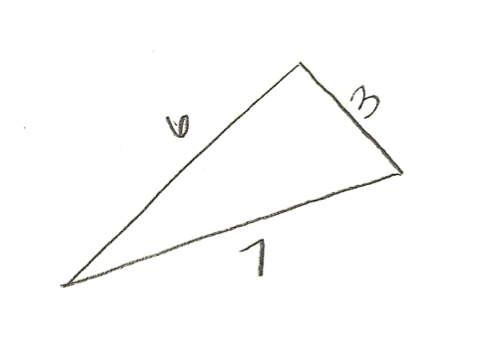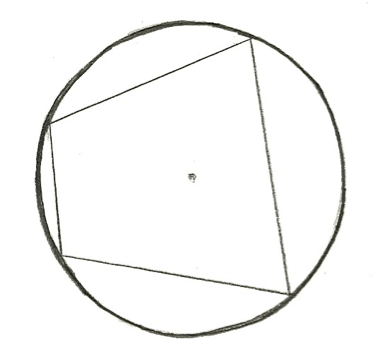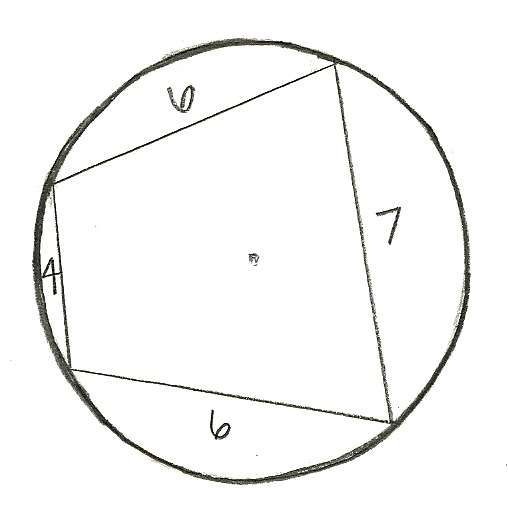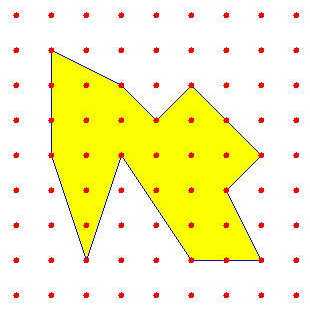Ideas in Geometry/Area
< Ideas in Geometry3.2.1 Areas
There are simple equations to find the area of common shapes such as the triangle or parallelogram.
Heron's Formula
We learn at a young age that the area of a triangle can be expressed by the equation  base
base  height. This uses two sides of a triangle on either side of an angle but sometimes it can be difficult to find the height of a triangle that is perpendicular to the base, creating a
height. This uses two sides of a triangle on either side of an angle but sometimes it can be difficult to find the height of a triangle that is perpendicular to the base, creating a  angle, which is what you need for the usual formula for the area of a triangle. But there is also a way to find the area of a triangle using the lengths of all three sides. This can be expressed in Heron's Formula where the area can be found using the equation
angle, which is what you need for the usual formula for the area of a triangle. But there is also a way to find the area of a triangle using the lengths of all three sides. This can be expressed in Heron's Formula where the area can be found using the equation  where a,b &c represent the sides of the triangle and p=a+b+c, the perimeter of the triangle.
where a,b &c represent the sides of the triangle and p=a+b+c, the perimeter of the triangle.
Here is an example to show what we mean:

To find the area of this triangle, we would use the equation with the sides lengths: 3,6 & 7 and find the area --> p=16  and we would get the answer
and we would get the answer 
A Quadrilateral Circumscribed in a Circle
If we know that there is a formula that works for triangles given the three lengths of the sides, we can find a formula in a similar way for the area of a quadrilateral. As long as the quadrilateral can be circumscribed in a circle, which means each vertex touches the inside of the circle and the opposite angles must sum to  , the area of the quadrilateral can be solved. See picture below of a quadrilateral circumscribed in a circle.
, the area of the quadrilateral can be solved. See picture below of a quadrilateral circumscribed in a circle.

Brahmagupta's Formula
In this formula, Brahmagupta's Formula, if given a quadrilateral that can be circumscribed in a circle (also known as cyclic), the area of the quadrilateral can be expressed by the equation:  , where a,b,c & d represent the sides of the quadrilateral and p=a+b+c+d, the perimeter of the quadrilateral.
, where a,b,c & d represent the sides of the quadrilateral and p=a+b+c+d, the perimeter of the quadrilateral.
Here is an example to show what we mean:

Using these side lengths: 4, 6, 6, & 7, we would use the formula to find the area --> p=23  and get the answer to be
and get the answer to be 
Lattice Points
There is also a way of finding the area of shapes besides triangles and quadrilaterals that involves lattice points. Lattice points are points that are spaced 1 unit apart, horizontally and vertically in a plane. Here are some lattice points:

Pick's Theorem
If the vertices of a polygon are located on the lattice points, we can find the area of the polygon by using Pick's Theorem:  where b=the number of lattice points on the border of the polygon and n=the number of lattice points on the inside of the polygon. Here is an example:
where b=the number of lattice points on the border of the polygon and n=the number of lattice points on the inside of the polygon. Here is an example:

Since the vertices of the polygon lie on the lattice points, we can use Pick's Theorem. So in this example: b=15, n=14. And  . So the area=20.5 square units.
. So the area=20.5 square units.